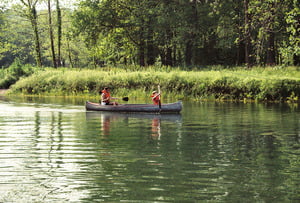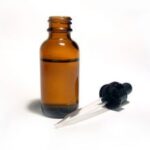Based on my experience, paddling a canoe can be a lot of fun not to mention good exercise. There are, however, quite a few paddle strokes that novice paddlers should become familiar with before venturing out onto the water solo. Here’s a quick rundown on five of the most important ones:
1. Draw Stroke
In my opinion, a draw stroke is essential to master because it is used to help propel the canoe towards the paddle side. I find it helpful to use the draw stroke when trying to pull up to a boat dock. In order to execute a draw stroke, you’ll need to place one of your hands on the top of the paddle. The other hand should be placed farther down the handle towards the paddle’s blade. Continue by extending the blade of the paddle as far from the canoe as possible and then pulling it back through the water towards the canoe.
2. Pry Stroke
A pry stroke is crucial when it comes to propelling the canoe away from the paddle side. Start by placing your hands in the same positions used during the execution of the draw stroke. Continue by turning the paddle’s blade parallel to the canoe’s gunwale. Then slide the paddle blade under the canoe and use a prying motion to move the canoe. Be sure to keep the paddle blade at a perpendicular to the canoe while you do so.
3. Forward Stroke
A forward stroke is important to learn because it allows you to propel the canoe forward in a straight line. In my experience, it is one of the most important to learn for that reason. In order to execute the stroke, position one of your hands on the top of the paddle handle and the other more towards the bottom of the handle. Place the blade of the paddle into the water alongside the canoe. Pull the blade back through the water in a straight line. If the canoe bow starts to deviate from the straight line, you may need to employ a J-stroke or a C-stroke.
4. Back Stroke
The back stroke is almost identical to the forward stroke, only you are pulling the back of the paddle blade alongside the canoe in a straight line. Doing so will send the canoe in reverse. I have used it many times to back up and avoid hitting objects. In addition to propelling the boat backwards, the stroke can also be used to stop the canoe.
5. C-Stroke
Personally, I have found that the C-stroke is helpful when it comes to keeping the canoe going straight. As you are paddling with a forward stroke, the bow of the canoe will typically turn. A successfully executed C-stroke will counteract the movement of the bow and keep your canoe going straight. You’ll want to place your hands on the paddle handle as if you were going to execute a draw stroke. Extend the blade out from the canoe and place it into the water. Then pull the blade through the water towards the canoe and into the shape of the letter C. That’s all there is to it.
Killeen Gonzalez enjoys the great outdoors with her family and has traveled extensively.
More from this contributor:
Best 5 Campfire Fish Dinners for Spring
How to Circle Cast with Ultra Light Tackle
Best 5 Florida State Parks for Canoeing
5 Items to Take on Turkey Hunting Trips in Spring



